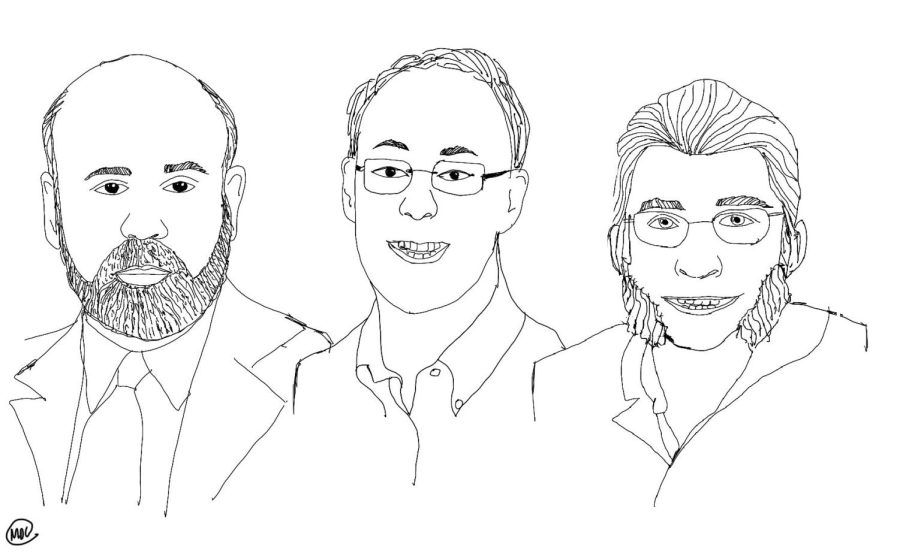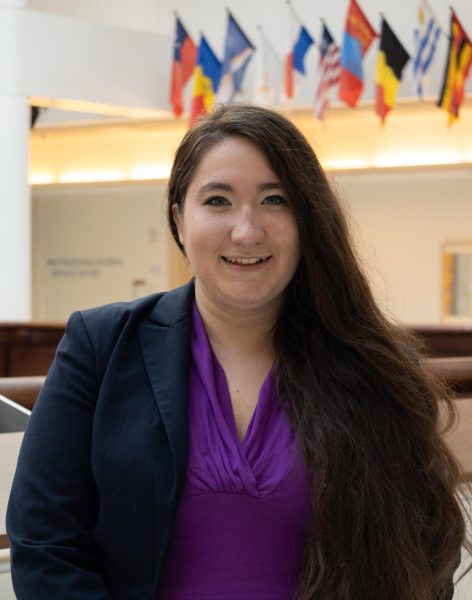Former Federal Reserve chair wins Nobel Prize in economics
October 22, 2022
The Nobel Prize for economics was awarded this year to Ben Bernanke, Douglas Diamond and Philip Dybvig for their pioneering research in underpinning the important role banks play in an economy, especially during financial crises.
“The laureates’ insights have improved our ability to avoid both serious crises and expensive bailouts,” Tore Ellingsen, who is the committee chair of the economics prize, said in a statement.
Bernanke received his bachelor’s degree from Harvard University and earned his doctorate in 1979 from the Massachusetts Institute of Technology. He was the former chair of the Federal Reserve from 2006 to 2014. He led the Fed during the 2008 financial crisis.
He is currently an economics fellow at the Brookings Institution. He is also a senior adviser to companies such as Citadel, a hedge fund, and PIMCO, an investment management firm.
Diamond received his bachelor’s degree in economics from Brown University in 1975. He obtained his masters degree and doctorate in 1980 from Yale University.
Diamond currently serves as a distinguished professor in finance at the University of Chicago’s Booth School of Business. He is also a research associate of the National Bureau of Economic Research and is a member of the National Academy of Sciences.
Dybvig received his bachelor’s degree from Indiana University in 1976, with a double major in physics and mathematics. Like Diamond, he then went on to earn his master’s degree and doctorate from Yale University.
Dybvig currently serves as a professor of banking and finance at the Olin School of Business in the Washington University in St. Louis.
Together in the 1980s, the three of them conducted research on how to make banks less vulnerable during crises and how the collapse of banks accentuated the crisis.
In their research, they concluded that the government must serve as a sovereign guarantor and lender of last resort in case of an imminent collapse of banks.
According to the research, for an economy to function, savings must be channelized into investments.
However, there is a contrast between savers — who want instant emergency access to their investments — versus business owners and borrowers, who want assurance that they won’t be forced to pay prematurely.
Diamond and Dybvig concluded in the 1983 paper that banks address both these issues in a consequential fashion. Banks provide savers with instant access to their money and borrowers with loans for short and long terms.
However, the economists also concluded that when these two activities combine, banks are exposed to various rumors regarding their collapse. With this, savers tend to give in to the inexactitudes circulated around the danger to banks, and this may exacerbate their collapse.
Diamond determined that banks perform another important societal function by checking the borrower’s creditworthiness and making informed decisions on investments based on that.
Bernanke contributed his analysis of the Great Depression to the study and interlinked three key events: rumors of bank collapse, people running to banks to withdraw money and how those two prolonged the Great Depression.
When they collapsed, banks lost borrowers’ valuable information, which could not be recreated quickly. People could not easily channel their savings into productive investments.
Bernanke used the same research and applied it during the 2008 financial crisis, ensuring that banks did not collapse and were fully capitalized.
An average of 70 banks failed nationally each year during the 1920s. During the first 10 months of 1930, 744 banks failed, which is over 10 times as many as in the previous decade. A total of 9,000 banks failed during the ‘30s.
It’s estimated that 4,000 banks failed during 1933 alone. Depositors saw $140 billion disappear through bank failures that year. Only 515 banks failed between 2008 and 2015, and not a single depositor lost a penny.
Under Bernanke’s tenure, the Fed’s balance sheet soared to more than $4 trillion from less than $1 trillion. The central bank sought to foster growth by increasing the money supply in the economy.
Reactions to Bernanke’s win were mixed. Gita Gopinath — a former student of Bernanke who is now a deputy managing director at the International Monetary Fund — congratulated the three winners, tweeting that “it is a great day when your thesis adviser @benbernanke wins the Nobel Prize.”
“Now that’s a prize lots of us will be happy to see,” CUNY Graduate Center economics professor Paul Krugman, who won the Nobel Prize in economics in 2008, tweeted. “Fundamental work of huge practical importance — maybe even more as the ramifications of monetary tightening and the soaring dollar trigger more crises.”
Others voiced criticism against Bernanke’s wing. Société Générale SA strategist Albert Edwards tweeted that Bernanke’s research neglected analysis of the credit bubble in the late ‘20s, saying “no wonder then that he was negligent in allowing the credit bubble preceding the 2008 GFC.”
“Ben Bernanke wins the economic Nobel Prize at the very moment when the global financial system is (once again) on the edge due to the misguided monetary policies he and other central bankers spearheaded,” Zoho Corp. CEO Sridhar Vembu tweeted. “This is a bankruptcy moment for central banking and the economics Nobel.”
The economics prize is known as a memorial award since it was not established by namesake Alfred Nobel in his will but by the Swedish central bank.
In addition to the Nobel prize itself, the three winners will receive 10 million Swedish kronor, which is equivalent to $885,370, and split the financial award when they are given it on Dec. 10.









Aniket D • Oct 30, 2022 at 12:07 pm
Sometimes explanations and elaborations go hand-in-hand and reading this felt the same. The pointed facts and explorations is what diversifies every content, your article was one of them. Keep going! Keep posting.
Aditi Malhotra • Oct 30, 2022 at 11:34 am
Awesome